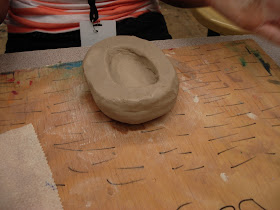This is a fun lesson I've done for years with 3rd and 4th Graders. First, I show them pictures of flamingos and give them a handout with lots of different types of flamingos. Then I demo how to draw one and they practice in their sketchbook.
Then they paint their background first on a sheet of heavy white paper- sunsets, sunrises, beach scenes- whatever they want. We use tempera paints and glitter paint for the ocean.
While these are drying, they start drawing their good copy flamingo on another sheet of white paper. Paint these with bright pink tempera and let dry. Then add a nice thick outline with a black permanent marker and carefully cut them out (warning- super skinny legs are tricky for students to cut out). Paint a thin layer of white glue on the back and glue them to the background. For a final touch, add a googly eye and a feather for a tail. If you have some sand, you could also sprinkle this on some white glue if you have a beach scene (see last two photos).
Here's a good handout from Enchanted Learning.com
Glitter paint is fun for the ocean.
Hot glue on a feather for a tail.
Ta da!













































.JPG)
.JPG)
.JPG)



